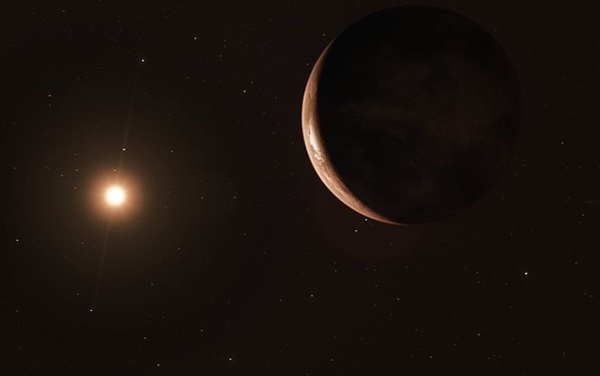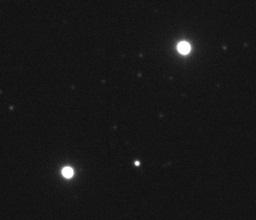Barnard's Star - A planet revealed
Barnard's Star
Barnard's Star has been a point of interest for astronomers for a long time, and for many different reasons. It is a low-mass (0.16 solar mass) red dwarf star, located approximately 6 light-years away from Earth. It is the second closest star system to the Sun and the fourth-closest individual star after the three members of the Alpha Centauri system (approximately 4.4 light-years away).
In 1916, the astronomer E.E. Barnard discovered that it had the largest known proper motion (apparent movement across the sky) of any star relative to the Sun. Its path will bring it within 3.8 light-years of the Sun in 11,700 AD, when it will become our nearest neighbour.

Image Credit: ESO/M. Kornmesser
The Exoplanet: Is it similar to Earth?
Now, after past claims that Barnard's star has an exoplanet orbiting and it and the claims being withdrawn or disproven, researchers have found that there is a frozen super-Earth orbiting Barnard's Star; a planet at least three times the size of Earth. Living conditions unfortunately don't seem promising: Barnard's Star b (the exoplanet) likely has a temperature of around -170 degrees Celsius - more than cold enough to keep your ice cream frozen, but you'll be frozen with it! Researchers think so far that this exoplanet is only provided with 2% of the energy that the Sun provides the Earth, certainly not living conditions that the life as we know it on this planet could survive with.
NSO Activity on Barnard's Star
An interesting fact about Barnard's Star is, as we've mentioned, its proper motion across the night sky. It allows us to use it as a great example to describe and investigate the effect known as Parallax: When a foreground object moves significantly against its background when the observer changes position, the distance to the foreground object can be measured using simple trigonometry. Thus the distance to Barnard's Star can be approximated by using NSO observations made with the Liverpool Telescope. Try out the activity below:


